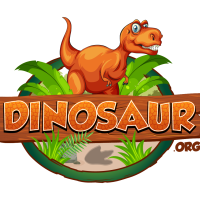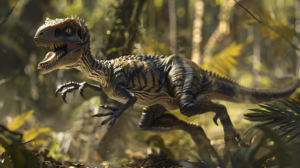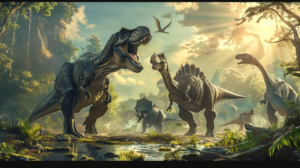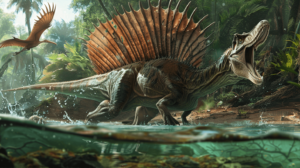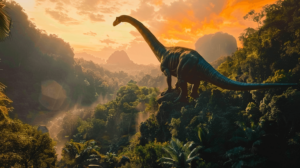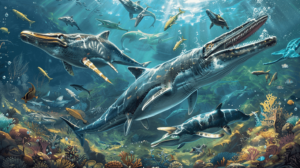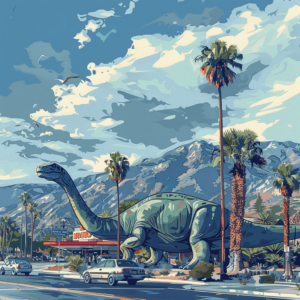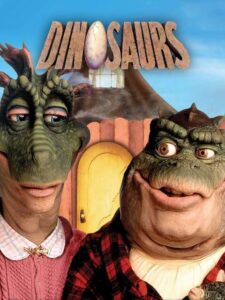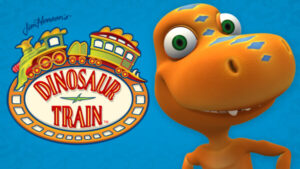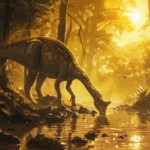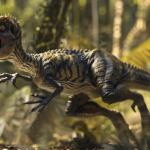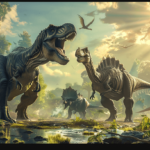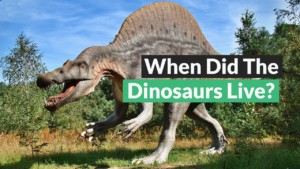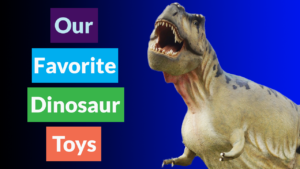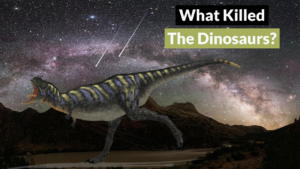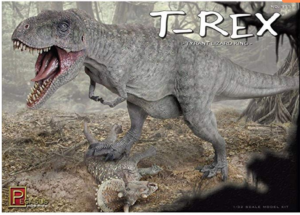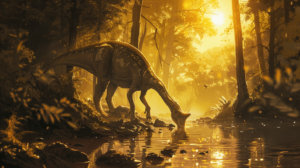
The Ultimate Guide To Tyrannosaurus Rex
Table of Contents
Toggle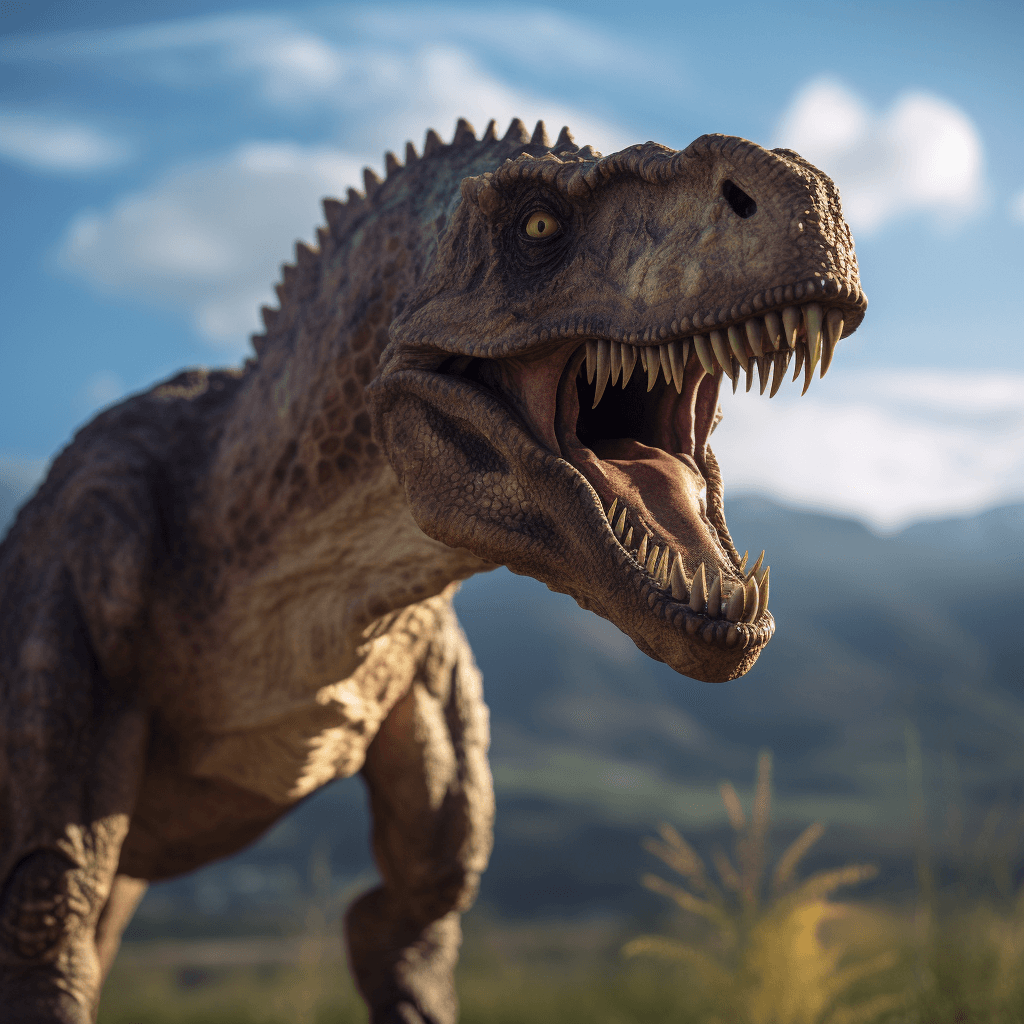
Tyrannosaurus rex, or T. Rex for short, is one of the most famous dinosaurs in history. T. Rex lived during the Late Cretaceous period and was one of the last non-avian dinosaurs to go extinct. This massive predator could grow up to 40 feet long and weigh over 6 tons! Even though T. Rex is gone, we still have a lot to learn about this amazing dinosaur. In this ultimate guide, we will cover everything there is to know about Tyrannosaurus rex, from its anatomy to its place in pop culture. Keep reading to become a T. Rex expert!
Overview of the Tyrannosaurus Rex
The Tyrannosaurus Rex, more fondly referred to as the T-Rex, is one of the most iconic and scary dinosaurs that ever lived. It was a large carnivorous dinosaur that lived during the late Cretaceous period and could grow up to 12 meters long from head to tail. This monster had razor-sharp teeth, small arms, reverse-jointed legs, and three large claws on each foot and hand. Scientists believe it had impressive sight and hearing, which helped it locate and catch its prey. Fossil evidence shows that this massive predator would have typically hunted herbivorous dinosaurs for food. Despite its intimidating size and strength, the T-Rex may not have been a fast-running dinosaur due to its heavy body weight; however, it is believed that it could at least reach speeds of up to 25 mph in short bursts while hunting or defending itself. The T-Rex remains one of the most fascinating ancient creatures ever discovered!
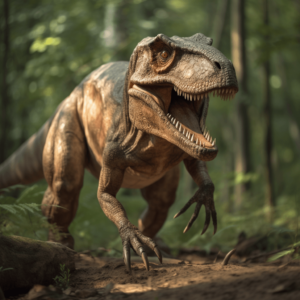
All we know of Tyrannosaurus Rex comes from fossils that have been studied for many years. Its young adult life would have been much faster and more exploration-driven than its later life, where it reached up to 40 feet in length and 10 tons in weight. Though a tyrannosaurus rex is mainly a carnivorous dinosaur, some young adult T-Rexes could have had omnivorous diets, as they were still relatively young and inexperienced hunters then. The effectiveness of its bite was due to the strength of its jaw muscles and because it featured one of the longest snouts ever seen on a large carnivore. More recent discoveries also indicate that young T-Rexes had razor-sharp claws for hunting and self-defense against others that came too close.
Size of Tyrannosaurus Rex
The Tyrannosaurus Rex is arguably one of the most recognizable dinosaurs, yet its sheer size remains intriguing and noteworthy. Though size estimates can be variable, some research suggests the T. Rex could measure up to 40 feet long from head to tail with a weight of around seven tons. This humongous carnivorous dinosaur would have been roughly six feet tall at the hip and about four feet high at its shoulder. Despite such enormity, it is remarkable that only 12 nearly complete skeletons have been discovered in fossil form. These extraordinary finds provide invaluable clues about this majestic prehistoric creature that lived within Earth’s ecosystem over 66 million years ago.
Weight of Tyrannosaurus Rex
The Tyrannosaurus Rex has become a part of popular culture and has been featured in many movies and books, but how much did the real creature weigh? Recent studies have suggested that an adult T.Rex weighed as much as 7 to 8 tons, comparable to an African elephant’s size. This means that the T.Rex was most likely one of the largest land carnivores ever to exist, with some estimates suggesting they could grow up to 40 feet long from head to tail. However, given this incredible power and size, it is amazing that it was still no match for some of its modern relatives, like crocodiles and Komodo dragons, when it constituted feeds on them when needed.
Physical Appearance of Tyrannosaurus Rex
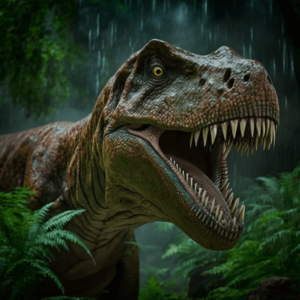
Tyrannosaurus Rex (T-Rex), one of the best-known and iconic species of dinosaurs, was a carnivore that lived between 68 and 66 million years ago. Its physical appearance is awe-inspiring! T-Rex had short but robust legs that made it an extremely fast runner, enabling it to attack its prey. Its physical features included serrated teeth, which were uniquely shaped for the T-Rex’s diet of mostly bones and heavily armored prey. Tyrannosaur teeth were larger and thicker than other tyrannosaurs, even among most dinosaurs, making them ideal for easily crunching through thick layers of flesh or crushing bones. It had powerful side teeth that resembled lethal bananas-like blades, as well as the largest tooth of any dinosaur known.
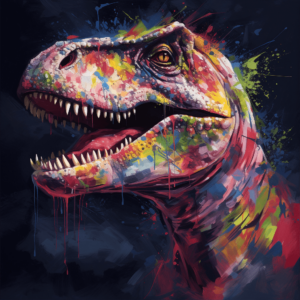
These lethal bananas shaped teeth are not for the faint-hearted! It had side and front teeth, and its bones were closely packed with collagen fibers offering structural integrity and resilience.
Additionally, Tyrannosaurus forelimbs are robust enough to handle armored prey, but their primary weapon was its huge upper jaw filled with serrated teeth. It could surely leave some bite marks on the prey. Despite standing more than 40 feet tall, it could reach a top speed estimated to be around 12 mph.
They also possessed a strong, muscular tail that provided balance during fast cornering movements, an advantage when hunting swiftly moving animals such as small mammals and birds. One of the most interesting features is that with the tail extended; it helped balance out the weight of a 1-14 ton creature when it walked or ran – and even dragged the ground for locomotion.
In addition to its sturdy body and long, powerful tail, T-Rex also had two large, powerful arms with two-fingered hands and sharp claws, which were used for capturing its prey. It had strong jaws filled with up to 50 or 60 banana-shaped teeth that could crush tough material like bones. The scaly skin covering T-Rex’s body would have been dark brown in color, while its back may have even been patterned in stripes or dotted with bumps. They may be smaller than many imagine, with tiny arms extending only slightly past the chest area. Yet their thick skulls, massive jaws, and remaining teeth (if any!) provide an image that intimidates predators or prey alike. Truly, the fascinating physical appearance of Tyrannosaurus Rex was simply awesome!
The T-Rex’s place in the food chain
The Tyrannosaurus-Rex, or T-Rex, was one of the most impressive predators of the Jurassic period. This massive dinosaur was an apex predator, sitting at the top of the food chain. It lived its life hunting down other dinosaurs and feasting on them with its powerful tyrannosaur teeth in order to survive. T-Rex hunted almost everything smaller than itself, including herbivore dinosaurs such as triceratops and stegosaurus. When it wasn’t pursuing prey, it scavenged on anything that had already died, making sure nothing ever went to waste. While stories about T-Rexes hunting and devouring humans don’t stand up to scientific scrutiny, this impressive dinosaur was certainly a formidable inhabitant of its prehistoric environment!
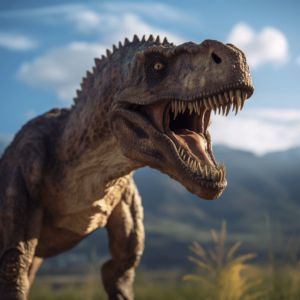
Diet of a T-Rex
The T-Rex may have been one of the most formidable land predators ever to roam Earth. With its razor-sharp teeth and impressive size, it could easily overpower other prehistoric creatures. But what was the Tyrannosaurus Rex’s diet like? While initially believed to solely hunt large game such as other dinosaurs, it is now theorized that T. Rex was an opportunistic feeder who ate both large animals and smaller prey. Actually, despite its ferocity, studies suggest that the T-Rex was a relatively passive hunter – ambushing smaller animals when the opportunity presented itself and scavenging for meals too large for it to catch. Research has shown that T-Rex eats many small to medium reptiles – maintaining a carnivorous diet, although some experts suspect larger prey wasn’t off the menu either. Rex fossils have shown its powerful jaws, and the rex teeth allowed for it to consume animals ranging from other species of dinosaurs to fish, small mammals, and even carrion! It is further proposed that certain occasions may have even led them to scavenge the kills of other predators. This combination of behaviors would have made Tyrannosaurus Rex an incredibly successful hunter in the Late Cretaceous period. Furthermore, considerable evidence suggests that T-Rex liked to snack on plant material as well. All in all, this ferocious predator was actually quite wide-ranging in its diet!
How T-Rex’s Hunt
Tyrannosaurus Rex surely is a famous dinosaur. But did you know that it is also an efficient hunter? T-Rex would use its razor-sharp teeth to chomp down on prey and swallow it in one bite. But it was more than just luck and predatory instinct that kept them alive throughout history. Through anatomical research, scientists have discovered that T-Rex had the optimal shape for a powerful jaw and neck, which enabled them to take down large prey with ease. Its skillful movements allowed it to attack from multiple directions instead of simply chasing after its target from behind, like many other predators do today. Used strategically, this strategy gave T-Rex an extra edge and improved their success rate during hunting sessions. Thanks to science, we now understand more about how these ancient creatures hunted and lived and can appreciate them even more!
Habitat of Tyrannosaurus
The habitat of the Tyrannosaurus Rex is certainly one of intrigue. It was believed to primarily inhabit coastal plains and inland floodplains, giving rise to the thought that it may have been an avid scavenger – primarily adapting to eating what had already been killed as opposed to hunting things themselves. Its range probably extended throughout much of what is now North America, although footprints have been discovered in Africa as well. Scientists today are still attempting to piece together the ecology of the T-Rex, looking at fossilized vegetation and living creatures they lived alongside while they roamed the land. Although their time on Earth ended some 65 million years ago, their legacy lives a very real part of our world today.
How the T-Rex evolved over time – from its early days as a small carnivore to its position as one of the most feared predators on Earth
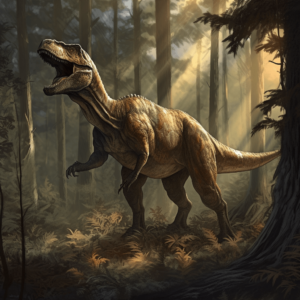
The Tyrannosaurus Rex, otherwise known as the “T-Rex,” is one of the most iconic dinosaurs in history. Over millions of years, it went through a dramatic evolution to become one of the Earth’s most feared predators. Fossil records show that early ancestors of the T-Rex, such as Proceratosaurus, were relatively small – less than four meters long and weighing no more than a ton. However, Cretaceous species like Gorgosaurus and Albertosaurus became higher in mass – with some grown adults reaching 8 to 12 meters and several tons. The ultimate apex predator T-Rex was even greater in size – growing up to 13 meters long and weighing up to 6.8 tons! This gigantic beast dominated its environment and had an incredible bite force estimated at somewhere between 35,000 and 57,000 newtons – making it perfectly suited for hunting large prey. Its powerful build and fierce nature ensured it was on top of the food chain for many years.
Where Can You Find Rex Fossils?
The complete tyrannosaurus rex specimen ever discovered can be found at the National Museum of Natural History in Washington, D.C. The nearly complete skeletons have been shipped to the museum from Montana, where it was discovered in 2003. Other fossils of a rex have been found scattered around the world and most notably in North America and Mongolia. Over 5 thousand specimens of this prehistoric giant have been unearthed to date, making it most likely one of the most studied fossil species for paleontologists. Visiting a museum to explore these amazing life forms from millions of years ago is an unforgettable experience; as you get up close, you get to learn about their anatomy and just how majestic they were in their heyday.
The T-Rex in popular culture – from books and movies to toys and games
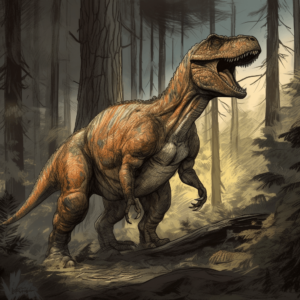
The Tyrannosaurus rex has become a beloved figure within popular culture and can be found not just in books and movies but also in toys, games, and many other forms of entertainment. For example, the iconic dinosaur has been featured in numerous popular movie franchises, such as Jurassic Park, Night at the Museum, and Toy Story. The T-Rex is also a beloved character from Mattel’s Jurassic World toy line, where fans can take home their very own T-Rex action figure. Video games have also featured the colossal carnivore, including LEGO Jurassic World and a mobile console game called Jurassic Survival: T-Rex Rampage. Fans of the giant lizard would be remiss to forget Dr. Seuss’ classic book “The Cat In The Hat Comes Back,” which features a howling T-Rex on its cover art. This certainly showcases the prominence of the ancient creature within our modern culture.
Fun facts about the T-Rex that you may not know
The Tyrannosaurus Rex, commonly referred to as the T-Rex, is one of the fascinating creatures that ever lived. While there is still much to learn about this dinosaur, here are some fun facts you may not be aware of. “Tyrannosaurus” means tyrant lizard in Greek, and “rex” is Latin for a king. Despite stories in the media, these beasts were actually quite slow but could move quickly in short bursts. In addition to its impressive size – up to 40 feet long and around 20 tons – it had one of the strongest bites. Scientists estimate it could deliver a bite force equivalent to 8,000 pounds on its prey! The T-Rex was also an excellent hunter having depth perception and millions of free nerve endings for sensing even slight vibrations in its environment. With unique physical traits and capabilities, the T-Rex truly earns its title as tyrant lizard king!
FAQs about the T-Rex, including whether or not it could actually fly
The T-Rex is a prehistoric creature that has intrigued us for centuries. Many questions arise as to its abilities and behavior, such as whether or not it can fly. While paleontologists have yet to uncover definitive answers, a few interesting theories have been posed on this matter. Some experts suggest that while the T-Rex was too heavy to fly, its forelimbs may have developed wings capable of running along the ground with great speed like a flying squirrel. Others claim that these dinosaurs’ sheer size and muscle strength made it possible for them to make short flights at slow speeds by flapping their arms. Whatever the answer, one thing is certain – the T-Rex will continue to captivate us for years to come!
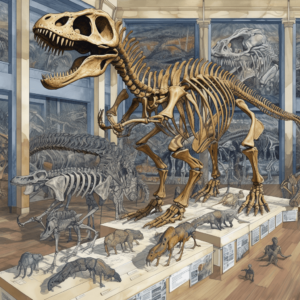
All in all, the Tyrannosaurus Rex is an incredible creature. With its large size, fierce hunting tactics, and iconic place in pop culture, there is no question that it’ll always be remembered. Its evolution from a small carnivore to one of the most feared predators on Earth further cements its importance. This majestic dinosaur has become an essential part of modern-day culture, from books and movies to toys and games. No doubt, it will continue to leave us in awe for years to come. As we have learned from this blog post, there are several more fun facts out there that you may not know about the T-Rex – so why not go find out what they are? Lastly, don’t forget the FAQs! Now that you’ve read up on the Tyrannosaurus Rex, you know the answer to whether or not it could fly!
